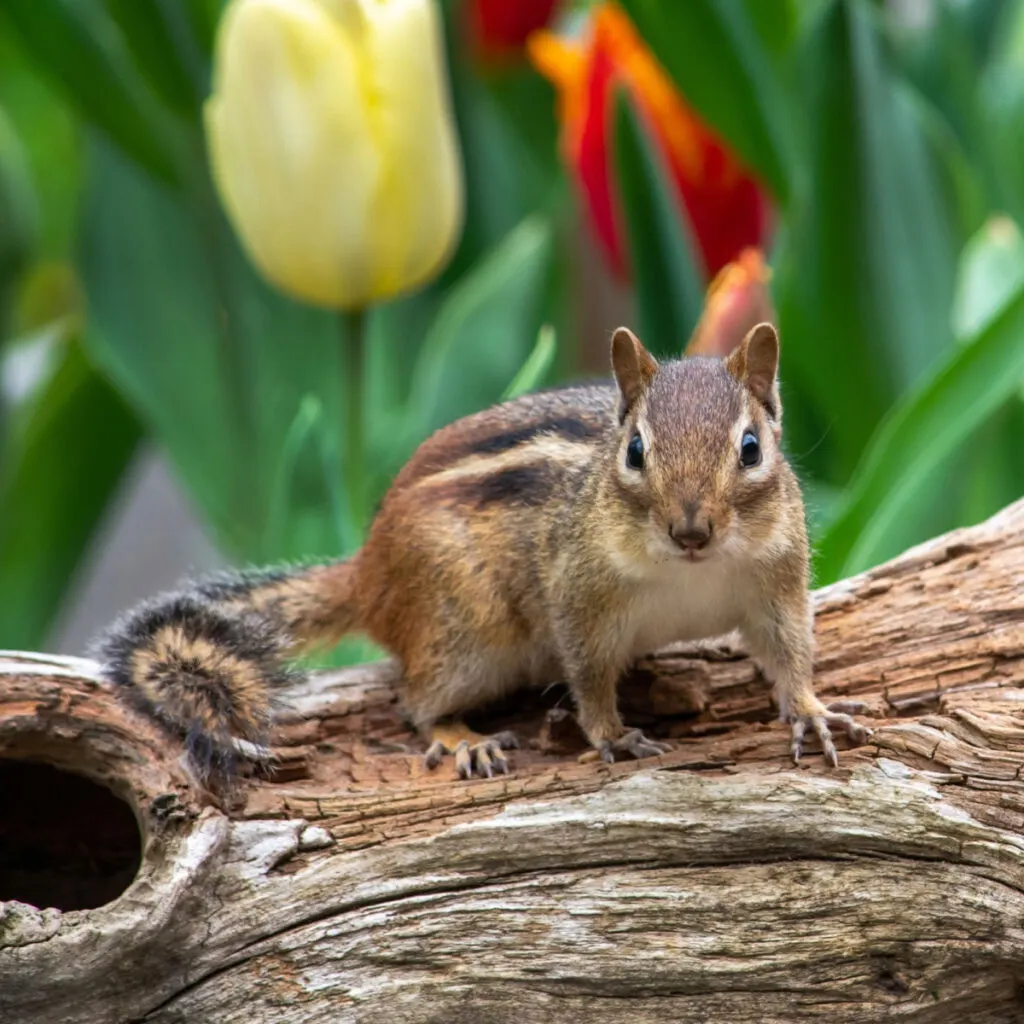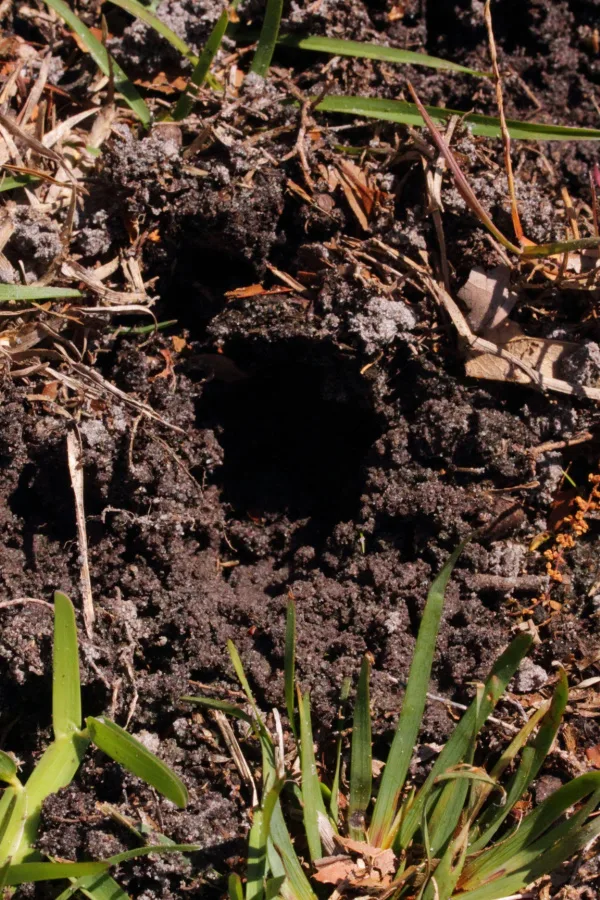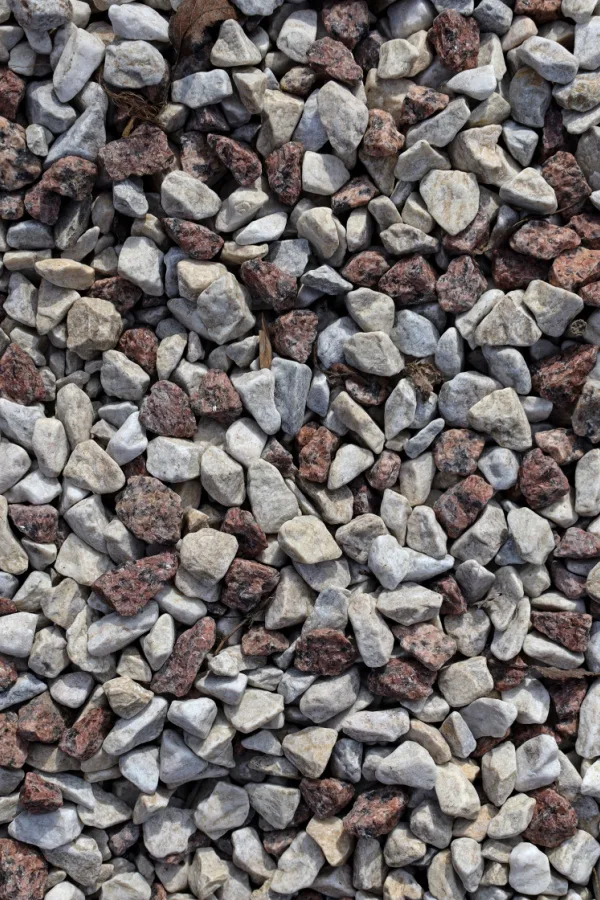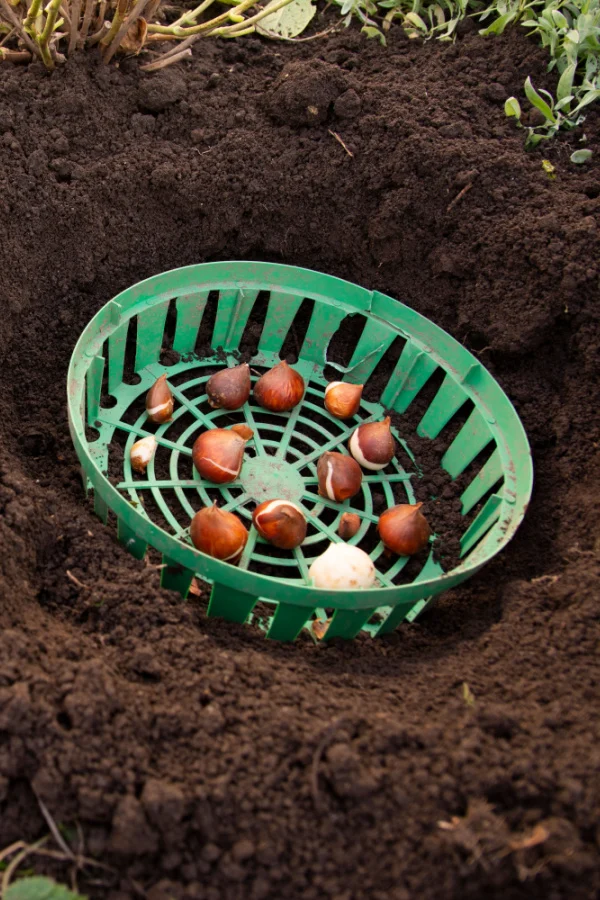Looking for a few tips and tricks to keep your fall bulbs safe from being dug up and ruined by hungry squirrels, chipmunks, mice, and other pests?
Fall is the perfect time of year to get your favorite bulbs in the ground. Unfortunately, it’s also the time of year when squirrels and other ground dwelling animals are looking for food to stash away for the winter. After all, once winter arrives, these animals have to rely mostly on what they stored to eat.
Nuts, of course, are a favorite for both squirrels and chipmunks to store away. As are another delicacy – flower bulbs. And as far as squirrels and chipmunks are concerned, your newly planted bulbs are all fair game!

So what can you do to keep your fall-planted bulbs safe from these critters? Is there a way to be able to keep bulbs in the ground and still enjoy seeing the playfulness of the squirrels and chipmunks out your back window?
The short answer is yes! But to do so, you will need to take a few extra steps to keep them safe until spring. While it might seem like an endless battle, you actually might be amazed at how quickly and easily you can safeguard your fall planted bulbs.
Bulbs Versus Animals – How To Keep Fall Bulbs From Being Dug Up
There are some animals that are more adamant about finding and digging up your precious flower bulbs than others. The most common offenders are usually squirrels, chipmunks and mice. While not as common, skunks and raccoons will also occasionally target fall bulbs as well.
Of all fall bulbs, tulips and crocus bulbs are the most common targets. Other types of bulbs produce a more bitter-tasting compound that actually repel some animals. Flowers like daffodils, hyacinths, and allium all give off this compound and are less likely to attract animals.

Something to keep in mind when you are planting is by putting a few of the “less tasty” bulbs among the tastier ones – it can often stop much of the digging right from the start. But beyond inter-planting, there are a few other key tips and tricks to keep your bulbs safe. And with that in mind, here are a look at four of the best of them!
How To Keep Fall Bulbs From Being Dug Up – 4 Simple Secrets To Protect Bulbs
#1 Planting Bulbs Deep
One of the biggest mistakes many gardeners make is to not plant their bulbs at the correct depth. And most often, that means not planting them deep enough. If you plant bulbs too close to the surface of the soil, it makes it much easier for squirrels and other rodents to find them.
You need to plant most fall bulb varieties at least 4 to 6 inches deep. When in doubt, plant bulbs double or triple the width of the bulb. (See: “Planting Fall Bulbs For Success”)
After you get your bulbs in the ground and cover them with soil, the next step is to add mulch. Leaving bare soil is an open invitation for the squirrels and chipmunks to investigate what’s underneath. Especially when that soil has fresh dirt around it.

Straw or shredded leaves work perfectly to cover planting holes. It not only helps protect the bulbs from harm, it also helps hold in a bit of moisture to the soil as well.
A couple of final notes on planting – always be sure to remove any bulb remnants after planting. When you leave behind dried bulb casings and other debris, the scent of those items will attract animals right to the planting site.
Also, even though using a natural fertilizer is a great way to boost your bulb’s growth and flowering power, it can attract pests. Skip adding natural fertilizer, bone meal, or fish emulsion to your planting hole and save those products until spring.
#2 Adding Coarse Materials To Planting Holes
Another great way to keep fall bulbs from being dug up is to add coarse materials to your planting holes. Materials such as pea gravel and crushed rock make digging difficult for squirrels, chipmunks, mice and other pests.

For best results, add one half-inch to an inch of pea or small sized gravel after your bulbs are down in the hole. Then, simply backfill with soil as usual on top. Small animals do not like digging down through the stone to get the bulbs. Even better, as an added bonus, these materials help aid in soil drainage.
#3 Using Bulb Baskets & Cages – How To Keep Your Fall Bulbs From Being Dug Up
If you have serious issues with pests digging up bulbs, then bulb baskets and cages are the answer! Both are by far the most effective way to keep fall bulbs safe from squirrels, mice and nearly all small animals after planting.
Bulbs boxes or cages are simply a container that you can directly plant your bulbs into. Most allow you to plant multiple bulbs at a time for big spring flower power.
The design allows the bulbs to sprout up through the holes at the top while still protecting the bulbs from animals. You can purchase bulb boxes and cages at most garden centers or online stores, and you can find them in all kinds of shapes and sizes. Affiliate Product Link : Bulb Cages For Squirrel & Chipmunk Protection
Making Your Own DIY Bulb Cages
You can also make your own DIY cages out of a few pieces of hardware cloth. For best results, use 3/4 to 1-inch stainless steel hardware cloth. Carefully cut the cloth using wire cutters and bend the wire into a box shape. When the animals dig – they simply can’t get to the bulbs! (Affiliate Product Link: 1-inch Hardware Cloth)

You can also use pieces of hardware cloth right on top of your bulb planting area. Cut the cloth into the desired length and width and cover with an inch of soil. The squirrels and mice won’t be able to dig through the wire but the sprouts can come right through.
When using this technique, be sure you extend the wire out a few inches past the planting area. This will keep the animals from getting at the outside bulbs from an angle. The soil should keep it in place, but you can also anchor it with stakes or a few heavy stones if need be.
Here is to protecting your bulbs this fall – and to gorgeous flowers next spring!
Follow Our Facebook Page For Even More Great Tips! Simple Garden Life Facebook Page
Simple Garden Life is a website dedicated to keeping gardening fun, simple and enjoyable! We publish two new articles each week along with a new garden podcast episode every two weeks. This article may contain affiliate links.
